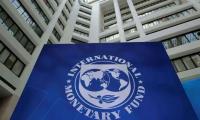As in previous years, various boards of intermediate and secondary examinations in KP have declared that the performance of government school students in this year’s matric exams has been extremely disappointing.
Although approximately 80 percent of students who appeared in these examinations are from government schools, almost all of top 20 position-holders in each board are from non-government schools and constitute only 20 percent of the total number of students who appeared in the examination. In a few government schools, not even a single student passed the exams.
A detailed analysis of the results of the 2008 matric examinations of the Peshawar Board of Secondary and Intermediate Examination revealed that students from non-government schools got higher grades while those who attended government schools students scored low grades. Although non-government schools receive no funds from the government and paid taxes, the examination results of their students have been far better than the results of students from government schools.
The three elements for the effective delivery of educational services involve increasing the access of all children of school-going age to schools, improving the quality of education and ensuring equity by providing educational services to all children without discrimination.
In Pakistan, approximately 75 percent of children attend government schools and 25 percent are enrolled at private schools. The quality of education provided at government schools is generally considered to be poor and rather limited in its ambit. Equity at government schools is a non-issue because government schools are generally meant for the economically disadvantaged segments of society.
There is a misconception in Pakistan that financial allocations for education are low and, therefore, the standard of education is also not improving. This is not true. If you take into account all four provinces, Fata, Gilgit-Baltistan and Azad Jammu and Kashmir and all sectors of education — primary, middle, secondary, higher education and technical education — the allocations for all these areas and sectors is more than three percent of the GDP.
In KP, the government has allocated Rs71 billion towards education and almost 35 percent of the development and recurrent budget goes towards the sector. Moreover, 50 percent of all government employees of KP are from the education sector. Despite this huge investment, examination results have been quite poor. There is a huge misappropriation of funds in these allocations. Any increase in allocations will not make a difference unless resources are efficiently used. For instance, Singapore developed a world-class education system by spending four percent of its GDP in a productive manner.
There is also a misconception that students are young and their opinions and perceptions don’t matter. Students are important stakeholders in the education system and we must work towards transforming them into useful citizens. Therefore, their opinions need to be considered while reforming educational system.
A survey was conducted in 2008 in Peshawar to gauge the satisfaction levels of the stakeholders of government schools (teachers, students, parents, education officers, and politicians). Stakeholders only showed 28 percent satisfaction level towards the delivery of educational services. Students showed the highest level of dissatisfaction among all stakeholders. They were interviewed in their classrooms at primary, middle and high school levels. Many of them complained that teachers don’t teach them properly in classrooms and spend time chatting with other teachers in the staff rooms. They complained of physical punishment and the imposition of undue fines. Students from minority groups complained that derogatory terms were being used against them.
It is time to recognise the opinions of students, encourage them to openly express themselves and address their grievances. There is a need to monitor the presence of teachers in schools and classrooms through external agencies outside the education department. In a bureaucratic government structure, where there is no concept of punishment and reward, the performance of teachers cannot be improved. There is a strong need to manage the education department in a performance-based system and government-private sector collaborations should be encouraged. In Punjab, the government has handed over all government schools that have shown poor examination results to the private sector. The government of KP has recruited 40,000 teachers on the basis of the NTS testing and is planning to recruit 15,000 more in the same manner. In order to improve the education sector, out-of-the-box thinking is needed. The main features of Singapore’s educational system are the decentralisation of power, autonomy and the devolution of responsibility to schools.
Within the large structure of education –where there are more than one lakh schools throughout KP – it would prudent to decentralise the management at the lower district level so that various districts can compete with each other. Any reforms in the education system should be made in light of worldwide trends within the education sector.
The writer is a Peshawar-based academic.
Email: alishahzadpk4@yahoo.com
A health worker administers polio vaccine drops to a child during a door-to-door polio vaccination campaign in Lahore,...
Armed militants of the banned Tehreek-e-Taliban Pakistan pose for a photograph in Orakzai Agency. —...
An aeroplane of the national flag carrier of Pakistan is seen in this file photo. — AFPWhile Pakistan considers...
Representational image of a graph depicting various variables. — APP/FileInitiated by the centre and fiercely...
In this picture taken on April 16, 2023, people throng a market area during shopping in Lahore. — AFPOne of the...
Honour crimes also target men. In Sikandar Ali Lashari vs The State, SHC upheld conviction passed by ATC for honour...







